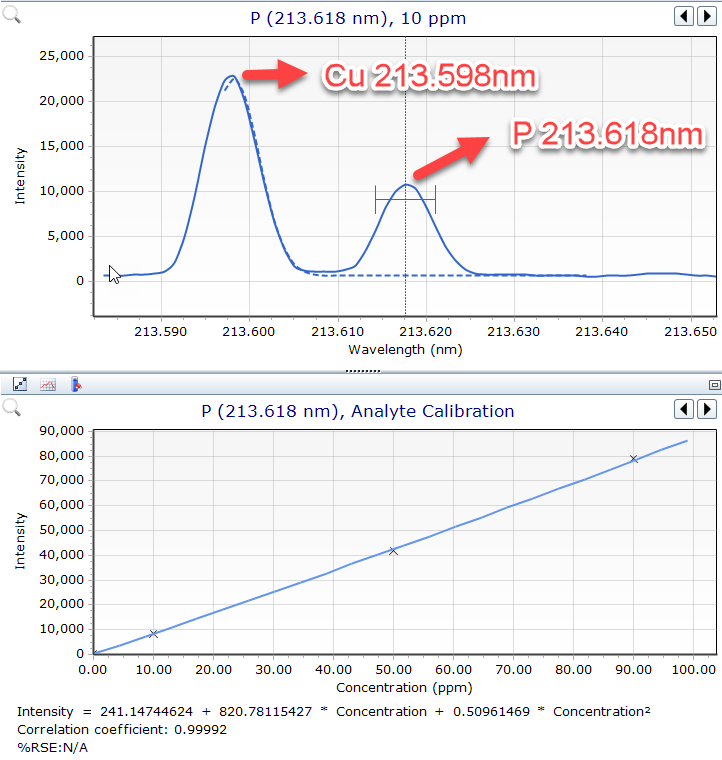Our lab is currently operating a 5000 series ICP-OES using an organic matrix (kerosene solvent) for detection of phosphorus (213.618) in a corn oil matrix. We currently apply the FACT correction for P with a dilution of an Agilent A21 metals standard (placed as analyte correction, and the FACT blank being our 0ppm standard from that day), but have found that Cu may be contributing negatively to the results of P under FACT correction, correcting our results to a value relative to the copper interference within the sample. We have not previously included Cu as an analyte, but we are now seeing that there may be spectral interference that the A21 sample exacerbates with the presence of Cu in the analyte correction matrix, effectively minimizing our results due to the lack of a copper peak in our samples.
The following images are from our P analyte under FACT correction. The 0ppm sample displayed was used for FACT blank. The top two graphs are examples of how we are currently applying FACT, and the bottom two display what is believed to be the correct FACT modeling application. We would like to know if the bottom two images are the correct application of FACT, or if the top two appear incorrect.

More information about this can be provided upon request, and any advice or considerations will be appreciated. Thanks for reading,
Kyle Bell

